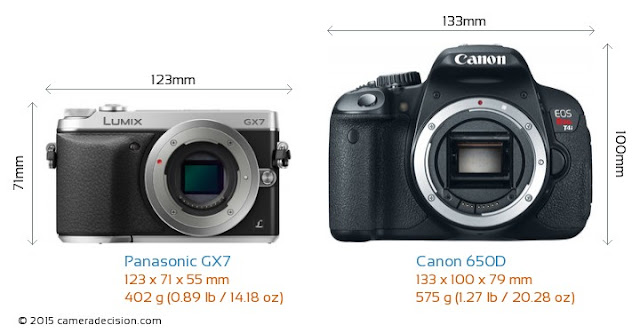 |
| Lac des miroirs, Hardelot, France |
 | |
| Taken on a potato |
Panasonic 14-42mm lens
Panasonic 45-175mm powerzoom lens
11mm + 16mm macro extension tubes
46mm UV filter
46mm circular polarising filter
GoPro Hero
GoPro floating bobber (£2 on ebay)
GoPro chest harness
Plenty of memory cards
It all fit in hand luggage, stuffed into my laptop bag.
When listed, it sounds like a lot, but to summarise: 1 small but awesome CSC (mirrorless compact system camera - uses interchangeable lenses like a DSLR but is a lot smaller) with 2 small lenses, and an action camera that technically belongs to my partner, but still extremely important for my trip (just wait until the shark cage diving videos!)
But Beth, I spent all my money on flights, accommodation and booze so I can't afford that, can I?
Anyone who knows me knows that I don't really like to spend a lot of money. The Panasonic gear I managed to get a good deal on, but now that it's not the current camera in the market, you can find it second hand for cheap as chips, as well as the lenses. The GoPro was my birthday present to my partner, who I decided didn't need the luxury of added wifi and a back LCD screen as in the more expensive GoPro Hero 4, so was bought for a little under £100. Sure, if you have the money, it's great to go for a more expensive camera that might get you a better picture. But you'd also have to fork out for extra insurance on it, as we know that we backpackers are well known for our carelessless for breaking things, losing things, and being a great target for greedy theives.


Don't I need a huge DSLR with battery grip, flashgun and 10ft long lens?
How dare you insult my GX7! Only joking. DSLRs have their perks, but when looking at the budget range, a smaller body CSC or enthusiast compact camera can not only take a brilliant photo, but will fit in your bag easily and discreetly. Other great CSC options are the Fuji X-T10, Sony A6000 or Olympus OM-D E-M10 II. Here's the difference in size of my camera compared to a similarly priced and specced DSLR.
Knowing that my little camera will take just as good a photo as this, I would much prefer to use the extra space in my bag for my favourite pair of shoes.
Now Beth, don't tell me I can get every shot with just 2 lenses. I need at least a million!
The 2 lenses I own cover wide angle to telephoto. Of course there are times I wish I had longer reach, a brighter aperture or an extremely wide angle but then I get over it because I remember I'm here to enjoy myself and not to try compete with David Bailey's kit bag. How do I get the whole landscape in my photo without a wide angle lens? The built-in panaroma mode on my camera does the trick just fine.
 |
| Valetta, Malta. ISO 200, Panoramic mode |
 | |
| Toowoomba, Queensland Australia. ISO 200, Panoramic mode |
Duh Beth, you forgot about a tripod. How can I take steady pictures without a tripod?
Days before my trip, I actually acquired a Joby Gorillapod - which are really cool mini tripods with bendable legs for gripping onto poles, branches or anything else. If you're going to take a tripod travelling, this is the perfect one. However, I decided I needed the extra space in my bag rather than take the tripod with me, and as much as I'd love to have it sometimes, I realised that my need for a tripod when on the move is unlikely. Mostly I shoot during the day in good light when a fast enough shutter speed can be used. Even night shots can be done well without a tripod. If manual settings aren't your strong point, many cameras like mine have a really effective night scenery or night portrait mode which are not only good at night, they are useful in any darker environments where you may struggle to get a steady picture. If long exposures are your thing, then you're going to have to get creative (use a rock, a bench, or a kangeroos head to steady the camera)
 |
| Malta at night, taken handheld using night scenery mode ISO 3200, F3.5, 14mm, shutter speed 1/15 |
I'd love to know what other people use when they are travelling! Leave a comment or post some pictures of your favourite travel shots.






